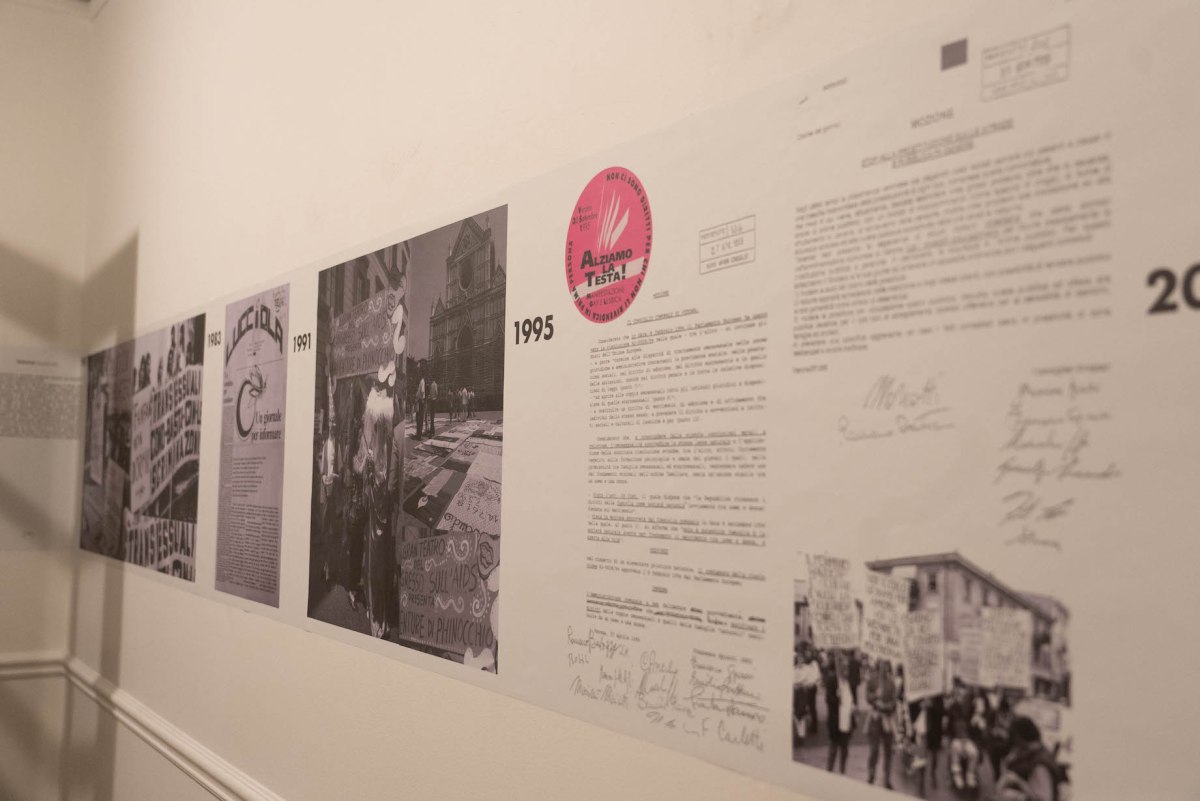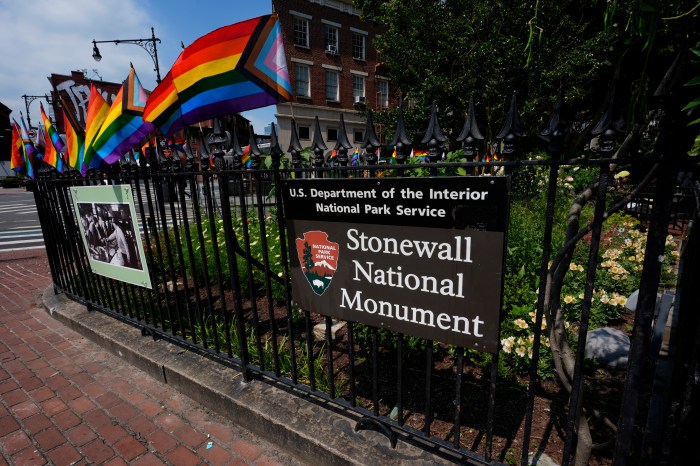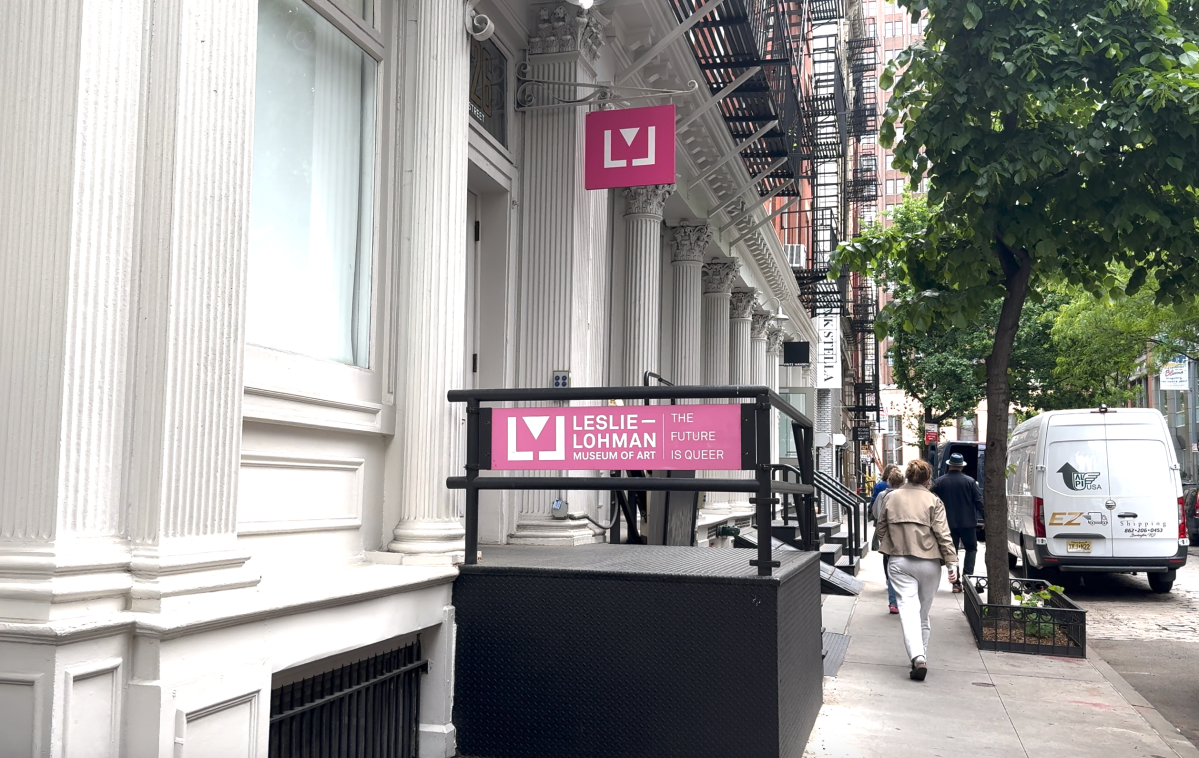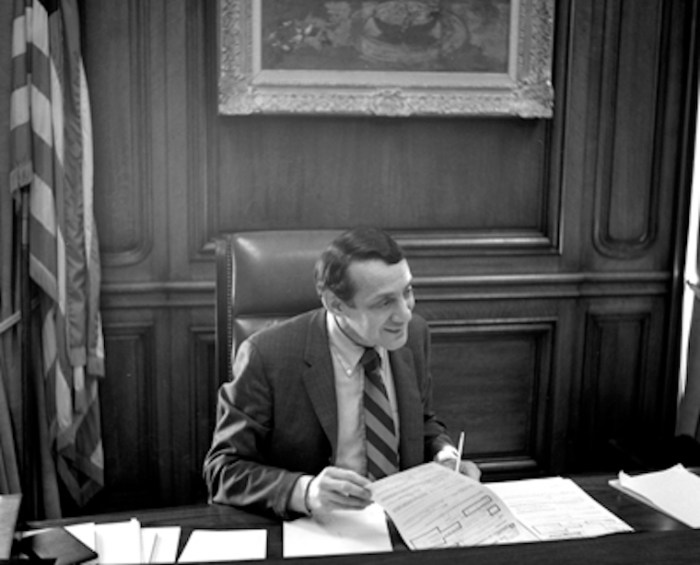The writing is on the wall at NYU’s Casa Italiana Zerilli-Marimò until May 31. It is a groundbreaking exhibition revisiting 20 years of Italian LGBTQ+ activism and organizing, “1982-2002: A Chronology for Italian Queer Movements.”
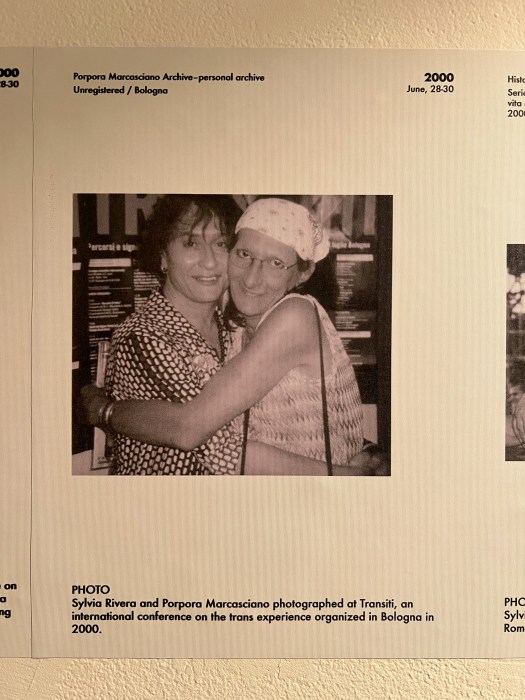
The show is presented as “an open archive,” according to co-curators Michele Bertolino and Giulia Sbaffi, displaying hundreds of reproductions of photographs, documents and memorabilia appended to the walls of the Casa’s first floor in a continuous loop. Since the loop rings the entire circumference of the space, overlaying doors, windows, and corners, even Casa director Stefano Albertini’s office door, visitors are, at every turn, faced with text and images telling them the stories of key events and developments in Italy’s queer history.
Some of the many reproductions include a photo of the cover of the proceedings from “Differenze,” a conference organized by lesbian women in Rome in 1981; an HIV/AIDS awareness flyer from the “Circolo di Cultura Omosessuale Mario Mieli” (Circle of Homosexual Culture Mario Mieli), a Rome-based LGBTQ+ association founded in 1983; and a page from the 1981 book, “Donna come donna. Storie di amori e lotte dei transessuali italiani” (Woman as Woman: Stories of the Loves and Struggles of Italian Transexuals), by Pina Bonanno, a founder of the trans liberation movement in Italy.
The ring is long and unbroken. Visitors, bring reading glasses and take your time.
A bibliography exhibited in the entrance hall provides guidelines on how to read this history, both chronologically and theoretically, with banners displaying the foundational books and articles by scholars and activists whose articulations undergirded the movements, such as “Elementi di critica omosessuale,” by Mario Mieli, a clarion call when first published in 1977.
The period on exhibit begins with the introduction by the Italian parliament in 1982 of regulations pertaining to individuals’ rights to officially change a name and/or sex on identity documents and closes with the attendance in 2002 of the collective “Queer for Peace” at the European Social Forum, an international anti-globalization conference, in Florence.
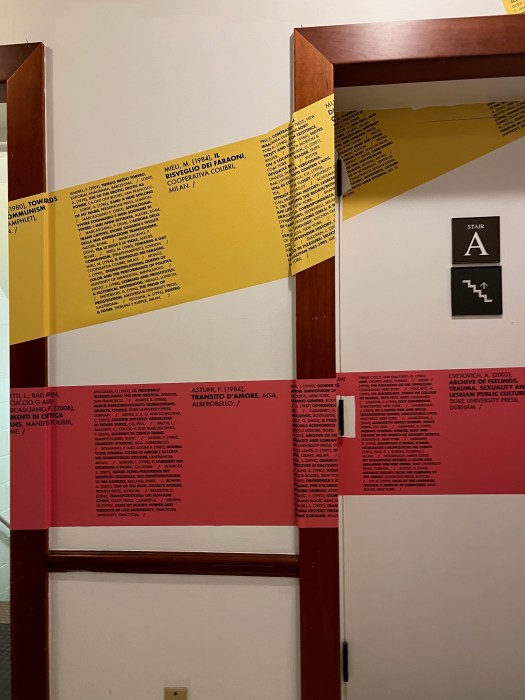
In addition to the facsimiles, the exhibition features original media and memorabilia such as zines and photographs from activist collectives and initiatives in Bologna, Rome, and Turin, Italy, and New York.
There is a photo series by Rome-based photographer Lina Pallotta of trans activist Porpora Marcasciano — a key figure of Italian queer movements — in political gatherings and public demonstrations over thirty years. Pallotta captures fleeting moments of love and kinship behind Porpora’s staunch advocacy of trans rights and representation in Italy. Her communication and solidarity with figures and struggles beyond Italy are also highlighted. There are photographs of Porpora with Sylvia Rivera, the New York-based trans activist, at “Transiti,” an international conference on the trans experience that took place in Bologna in 2000, and with Angela Davis, the California-based Marxist and feminist activist and intellectual, at the Bologna headquarters of “Movimento Identità Transessuale” (MIT), also in 2000. A photograph of Porpora with Leslie Feinberg, author of the seminal book “Transgender Warriors” (1996), enjoying each other’s company while traveling in Italy, not at any conference or demonstration, is a reminder of the right to simply enjoy life that these figures and movements fought to secure.
The curators decided to only include photographs of subjects in pairs or groups to emphasize the collective over the individual, said Sbaffi. Images of both protest and celebration line the walls: partying in the university city of Bologna, a key hub of nascent LGBTQ+ visibility; protesting discriminatory municipal laws in Verona, the quintessential city of heteronormative romance in the public imagination thanks to Shakespeare’s “Romeo and Juliet.”
This exhibition also revisits and reconsiders transformative moments of resistance involving other vulnerable populations. In 1982, for example, Pordenone, a group of sex workers in Aviano organized a strike against US naval base personnel in their city accused of violence against women working in the area. And in 2002 demonstrations in Turin protested the violent policing of migrants at a temporary detention center. These challenges remain.
“1982-2002: A Chronology for Italian Queer Movements.” | Casa Italiana Zerilli-Marimò | Until May 31

